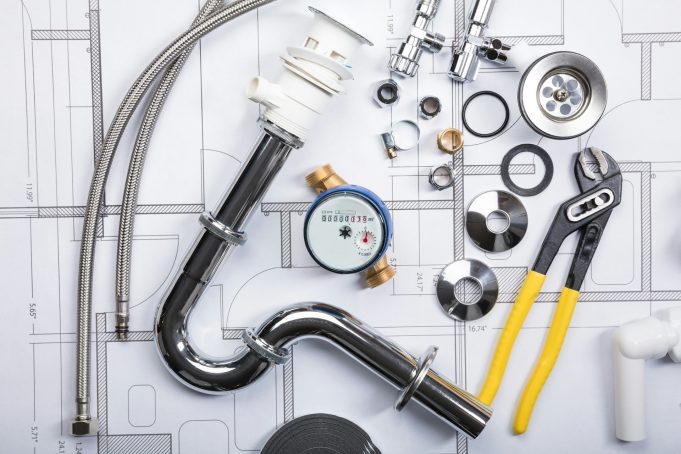Backflow preventers are essential to preserving the security and quality of your water supply in any plumbing system, whether it is residential or commercial. These tools are a vital line of defense against contaminated water, despite being frequently disregarded. Without them, there would be significant risks to your health and safety as contaminants and dangerous materials could easily return to your clean water lines.
It is impossible to exaggerate the significance of these devices, which are essential for everything from small cross-connection risks to major industrial plumbing hazards. They provide a straightforward but incredibly efficient method of protecting the public’s health and avoiding irreparable water damage to your system. Installing proper backflow preventers is a key step in maintaining clean, reliable water infrastructure.
Understanding Backflow Hidden Hazard
Water flow in a plumbing system that is unintentionally reversed is called backflow. This typically occurs when a sudden drop in water pressure causes tainted water from outside sources, such as industrial fluids, irrigation systems, or stagnant pools, to return to the main supply line. Water used for drinking, cooking, and hygiene may become contaminated as a result of such an incident.
Backflow can be divided into two primary categories: backpressure and backsiphonage. Backpressure is the process by which potentially contaminated water is forced back into the potable system when the downstream pressure exceeds the supply pressure. Conversely, backsiphonage results from negative pressure in the supply system, which is frequently brought on by high demand or a significant water main break.
If there is no safeguard in place, even something as simple as a garden hose left in a filthy bucket can cause a backflow. These minor mistakes serve as a reminder of how crucial it is to have appropriate protection in place.
What’s the function of a backflow preventer?
So, what does a backflow preventer do? It prevents tainted water from changing its course by acting as a physical barrier. In order to restrict water flow to one direction—into your house or place of business—and stop any return flow in the opposite direction, the majority of backflow preventers combine valves and pressure differentials.
By preventing any pollutants or contaminants from entering the clean water stream, these devices serve the primary purpose of preserving the integrity of potable water systems. To address particular risks, various types of preventers may be installed in multiple locations, depending on how complex the plumbing network is.
In larger systems, multiple preventers may be installed sequentially to provide layered protection, particularly in commercial or industrial settings.
Which Locations Do They Usually Install?
Cross-connections, or locations in the plumbing system where contamination may occur, are usually where backflow preventers are placed. Most frequently, these can be found in:
- Sprinkler and irrigation systems
- Commercial dishwashers and kitchens
- Hot tubs and swimming pools
- Systems for suppressing fires
- Cooling towers and boilers
High-rise structures, where pressure changes can happen more frequently, also use them. They may be found in outdoor faucets, hose bibs, or any plumbing fixture that is connected to a non-potable source in homes.
Effectiveness depends on placement. Installation must adhere to local codes and standards in the majority of jurisdictions, frequently necessitating the services of a certified plumber.
Device Types for Backflow Prevention
Backflow preventers come in a variety of forms to accommodate various systems and requirements:
- The most basic kind, known as atmospheric vacuum breakers (AVBs), are usually mounted on outdoor faucets or hose connections. Although they stop backsiphonage, they are not appropriate in situations where backpressure could happen.
- More sophisticated than AVBs, pressure vacuum breakers (PVBs) are frequently found in irrigation systems and are made to withstand small pressure changes without becoming contaminated.
- Double Check Valve Assemblies (DCVA): Perfect for moderately contaminated residential and commercial properties. Sprinkler systems and applications involving non-health hazards frequently use them.
- The most secure devices are called Reduced Pressure Zone Devices (RPZ), and they are necessary in high-risk settings like chemical plants, hospitals, or food processing facilities. Their purpose is to stop backsiphonage and backpressure.
Choosing the right device is crucial to fulfilling safety and legal requirements because each one has unique testing and maintenance needs.
Frequent Examination and Upkeep
The wear and tear of backflow preventers is inevitable, just like any other mechanical part. Debris, silt, or corrosion can impede internal mechanisms over time, decreasing their efficiency or leading to complete failure.
In addition to being best practices, routine inspections are frequently required by local water authorities. Every year, certified testing is necessary in many places to make sure the device is functioning as intended. In order to maintain compliance and safeguard your water supply, any problems must be fixed or replaced right away.
If maintenance is neglected, there may be fines, business closures, or worse, tainted water that reaches the taps.
Considerations for Law and Compliance
Where and when backflow preventers must be used are frequently determined by municipal plumbing codes and water safety regulations. These regulations differ from place to place, but they usually pertain to:
- Recently constructed
- Water-system renovations
- Commercial and residential properties with multiple units
- Warehouses and other industrial structures
Usually, property owners are in charge of making sure their backflow prevention systems are set up and operating correctly. In the event of contamination, noncompliance may lead to legal liability, health department violations, or the termination of water service.
A certified backflow tester or licensed plumber can help make sure your system complies with all relevant regulations.
Benefits Beyond Compliance
The advantages of installing backflow preventers extend beyond legal requirements, even though regulatory compliance is a major justification. They have:
- Prevent tainted water from getting into the municipal supply to safeguard public health.
- Protect your plumbing system from long-term harm brought on by variations in pressure.
- Maintaining infrastructure up to code will help preserve property value.
- Lower the risk of liability for claims of waterborne illness or damage
For businesses, having these systems in place demonstrates a commitment to health, safety, and environmental responsibility—an important consideration for customers and partners alike.
Final Thoughts
Although backflow events are uncommon, they can have serious repercussions when they do occur. In addition to being a major health hazard, contaminated water can harm plumbing systems and result in expensive repairs or legal problems. One of the easiest and most efficient ways to safeguard your water supply is to install and maintain dependable backflow preventers.
Proactively preventing backflow is crucial, whether you’re a commercial property manager seeking code compliance or a homeowner seeking peace of mind. You can keep your plumbing system and your water safe by being aware of the risks, selecting the appropriate equipment, and making sure to perform routine maintenance.














